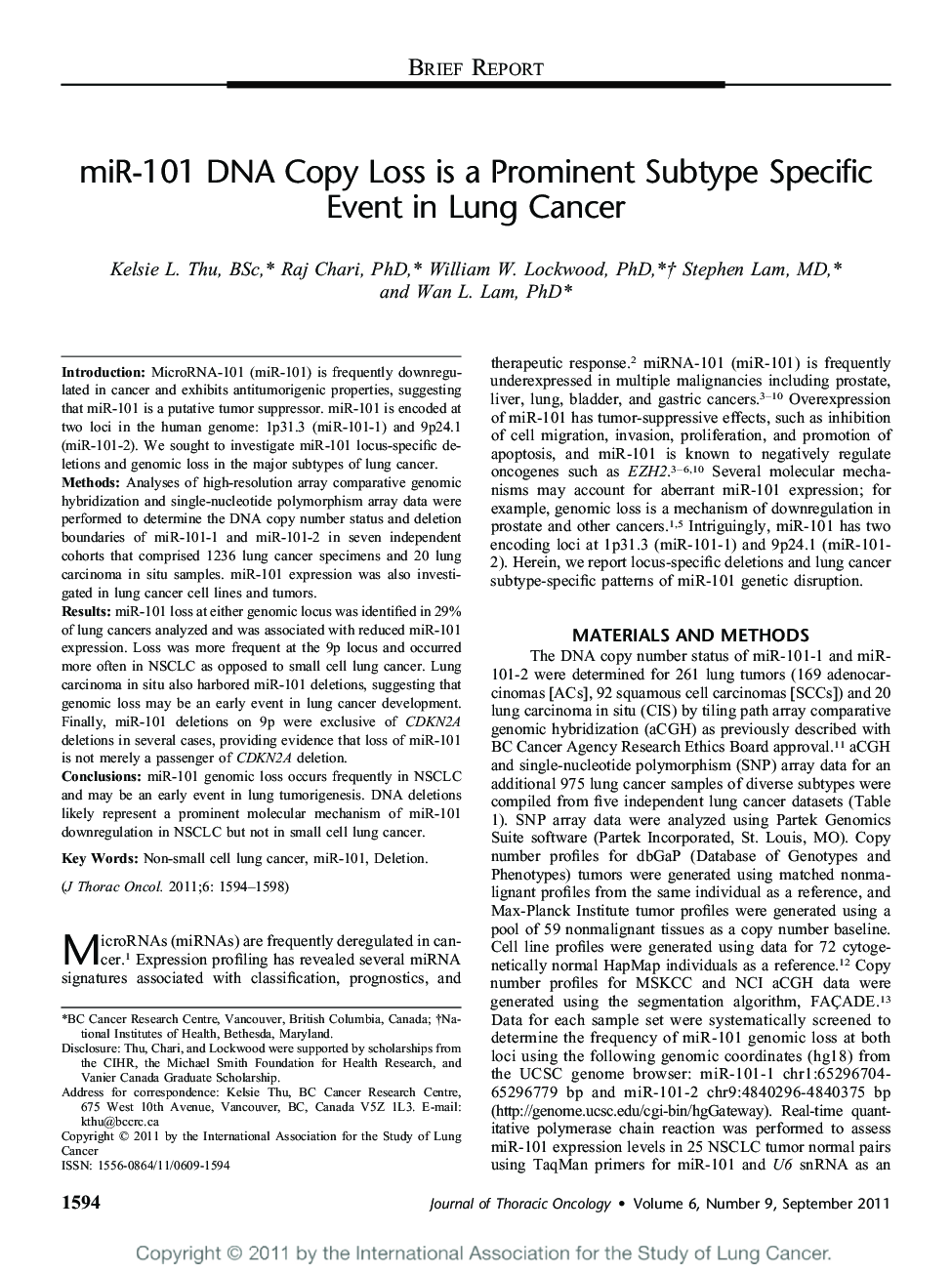| Article ID | Journal | Published Year | Pages | File Type |
|---|---|---|---|---|
| 3991218 | Journal of Thoracic Oncology | 2011 | 5 Pages |
IntroductionMicroRNA-101 (miR-101) is frequently downregulated in cancer and exhibits antitumorigenic properties, suggesting that miR-101 is a putative tumor suppressor. miR-101 is encoded at two loci in the human genome: 1p31.3 (miR-101-1) and 9p24.1 (miR-101-2). We sought to investigate miR-101 locus-specific deletions and genomic loss in the major subtypes of lung cancer.MethodsAnalyses of high-resolution array comparative genomic hybridization and single-nucleotide polymorphism array data were performed to determine the DNA copy number status and deletion boundaries of miR-101-1 and miR-101-2 in seven independent cohorts that comprised 1236 lung cancer specimens and 20 lung carcinoma in situ samples. miR-101 expression was also investigated in lung cancer cell lines and tumors.ResultsmiR-101 loss at either genomic locus was identified in 29% of lung cancers analyzed and was associated with reduced miR-101 expression. Loss was more frequent at the 9p locus and occurred more often in NSCLC as opposed to small cell lung cancer. Lung carcinoma in situ also harbored miR-101 deletions, suggesting that genomic loss may be an early event in lung cancer development. Finally, miR-101 deletions on 9p were exclusive of CDKN2A deletions in several cases, providing evidence that loss of miR-101 is not merely a passenger of CDKN2A deletion.ConclusionsmiR-101 genomic loss occurs frequently in NSCLC and may be an early event in lung tumorigenesis. DNA deletions likely represent a prominent molecular mechanism of miR-101 downregulation in NSCLC but not in small cell lung cancer.
